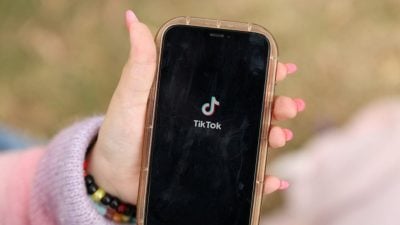
The ban on TikTok in Nepal has ignited a national discourse on the good, the bad and the ugly of the popular social media platform.
The debate has transcended its digital origins, infiltrating mainstream media, influencing policy decisions and permeating political circles.
Since its inception in China in 2016, TikTok has garnered a massive global following, particularly among millennials and Gen Xers.
The government, in its decision to ban TikTok, has cited a surge in online gambling and increasing user complaints.
The government has also mandated social media giants like Facebook, X and YouTube to establish liaison offices in Nepal.
User behaviour
The digital environment has significantly transformed global consumer interactions.
Recent statistics reveal a robust digital presence in Nepal, with 12.6 million social media users and 15.85 million internet users as of January 2023, constituting 41 percent of the total population.
TikTok, after Facebook, enjoys a substantial user base in Nepal, with 2.2 million active users. Notably, 55 percent of these users employ TikTok to research new products or brands, with 60 percent subsequently making purchases based on its content.
This shows how the platform’s content serves as a source of not only entertainment but information as well.
A research paper on influencer marketing indicates that TikTok users trust influencers for their originality, quality, quantity and humour, which shapes a positive user experience.
They also play a role as opinion leaders, amplifying the impact of their endorsements.
Another research on user behaviour sheds light on the underlying motivations driving social media usage, particularly on platforms like TikTok and Instagram Reels.
Users on these platforms are found to align with the use and gratification theory, where motives for engagement are shaped by factors like socially rewarding self-promotion, entertainment, escape, surveillance, novelty, documentation and trendiness.
User patterns and engagement levels are also contingent on user types.
Notably, the study reveals that female users tend to use these platforms more as an escapist addiction compared to their male counterparts.
It is to be noted that these findings are yet to be validated in Nepal’s context through full-scale research.
However, a quick content analysis of the comments and observations by the users on social media and my dipstick survey among the users reveal that for many Nepali women who lack access to traditional news and other platforms, TikTok has emerged as a medium for expressing concerns, voices and frustrations.
In essence, it helps to escape from the routine and rigmarole of their everyday lives.
Shifting habits and alternatives
Users migrate to alternative platforms whenever a ban is imposed on a particular social media platform.
India’s ban on TikTok resulted in a surge in platforms like Instagram Reels and YouTube Shorts. Similarly, users temporarily migrated to Threads after Twitter’s rebranding effort to X.
The users eventually returned to X, drawn back by its inherent stickiness.
These instances highlight a pattern where users readily embrace adaptive practices, adjusting their usage patterns rather than entirely abandoning social media platforms, even when faced with regulatory constraints that may initially force them to discontinue usage.
As an academician, I find that TikTok and Instagram Reels are the preferred sources of digital consumption for Gen Z students.
While concerns about attention span decreasing due to short content prevail, users, especially Gen Z, prefer retaining information presented through these platforms.
Businesses and educational institutions in Nepal actively use TikTok for promotional purposes, highlighting its popularity among Gen Z and Millennials.
My personal interaction with female small and medium enterprise owners on business scaling suggested that many Nepali small businesses, unable to allocate funds for extensive promotions, turn to TikTok.
For them, leveraging TikTok proves to be more impactful than investing substantial amounts in conventional promotional strategies.
Banning not an option
The algorithm of TikTok, like Facebook and X, is inherently addictive, impacting mindfulness.
Recognising the addictive nature of these platforms, policy-makers should shift the focus to regulating content rather than outright bans.
Each platform employs strategies to maintain user engagement, so addressing the drawbacks of social media requires a nuanced approach.
The government’s decision to allow or disallow similar apps should be based on comprehensive regulatory frameworks that protect societal interests without infringing on constitutional rights.
Banning such platforms should not result from ad hoc decisions but from well-thought-out rationales shared transparently with the public.
The government’s actions should be nuanced, balancing short-term concerns with long-term societal interests.
Education on proper social media use, privacy concerns and security issues is essential, as is well-documented research, including primary surveys, to inform decisions and prevent hasty implementations.
While navigating the evolving digital landscape, a measured and informed approach is crucial for the well-being of society at large.
ADVERTISEMENT
ADVERTISEMENT








































